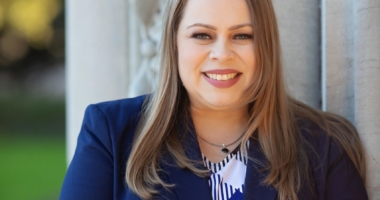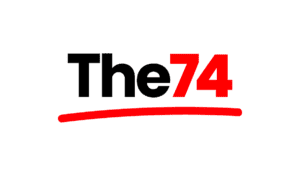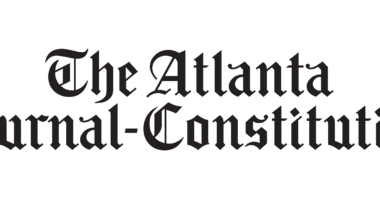The Pros and Cons of Professional Judgment
When it comes to providing financial aid, such judgment can help students but often fail to aid those who need help the most, argue Jaime Ramirez-Mendoza and Tiffany Jones.
On Oct. 1, students and families across the country began using their 2019 tax information to start filling out their Free Application for Federal Student Aid (FAFSA) for the fall of 2021, which institutions will use to calculate how much financial aid students are eligible for ahead of the admission cycle.
The problem is that 2019 was pre-COVID-19, so colleges are at risk of basing their aid calculations on information that no longer reflects students’ financial reality. That’s especially a cause for concern if those students are from Black and Latino households that have been decimated by unemployment and financial hardship amid the pandemic.
Fortunately, in extreme circumstances, students can appeal for more aid at the financial aid office, where an administrator may decide that their situation warrants a professional judgment and adjust elements of their financial data, potentially making them eligible for more funds. Unfortunately, not all students know they can appeal. Black and Latino students, who may be the first in their families to attend college, are less likely to be aware of that option, which, in times like these and given the already high costs of college, could mean the difference between finishing a degree or becoming one of the 36 million who start college and drop out.
In The Education Trust’s latest brief, we consider the pros and cons of professional judgment, offer ways to make the process more equitable, and provide recommendations on how financial aid officers could use it to address racial justice and help the students facing the greatest barriers.
We also note that the lack of uniformity in institutional policies — which vary greatly and often leave decisions up to financial aid officers — raises questions about how subjective and susceptible to bias professional judgments might be, especially since not much is known about the people making these decisions or the required training they receive. The U.S. Department of Education does not provide public data on financial aid officers that is disaggregated by race or gender, and the National Association of Student Financial Aid Administrators (NASFAA) — a membership organization that provides professional development opportunities and training to financial aid representatives — does not share demographic data on its 28,000 professional members with the public.
What’s more, neither the Department of Education nor NASFAA has set racial equity benchmarks for financial aid professionals to meet. According to financial aid experts whom we spoke with, while NASFAA offers voluntary workshops on topics such as microaggressions and mitigating bias, the Department of Education had no training sessions on racial justice, diversity, equity or inclusion at its 2018 and 2019 national conferences. Such a situation presents problems, since some financial aid policies and practices are built around the flawed notion of colorblindness, which can perpetuate white privilege and disparate treatment by race.
We also note that while financial aid officers’ professional judgment can give them the power to reassess a student’s financial need, the ability to help those who need it most is limited by certain federal guidelines — such as expected family contribution. For example, a financial aid officer can adjust elements of a student’s expected family contribution (EFC) — a number that colleges use to determine the amount a family can contribute. That calculation takes into account information from the FAFSA, such as student and family income and assets, and measures a family’s financial strength on a sliding scale, starting at zero — which demonstrates exceptional financial need. If a student’s EFC is already zero, recalculating it would yield no new aid because they already qualify for the maximum amount. Black, Native American and Latino students are more likely to have an EFC of zero, which means they are less likely to get relief from this particular type of professional judgment.
In addition, even if a financial aid officer exercises their professional judgment to help a student qualify for more aid, their ability to actually provide financial relief to that student depends on the resources their institution has available. And, unfortunately, since the pandemic and budget cuts are putting already strained college budgets under even greater stress, many colleges, particularly underfunded public institutions that serve a lot of vulnerable students, may not have any more money to give, leaving their students with little choice but to turn to loans or outside scholarships or drop out entirely.
New Approaches Needed
All this has negative racial justice and equity implications for students of color, particularly for Black students, who are already disproportionately burdened by crippling student loan debt. Forcing them to take on additional loans will only exacerbate that burden. Furthermore, Black and Latino students are more likely to attend underfunded public institutions that are less likely to have the emergency funds to provide financial relief. And asking students who have proven they need more aid to search for outside scholarships as a solution does not guarantee they will get relief.
Some students may turn to credit cards — a trend we are already seeing among both Black and Latino students — or work more hours to make up the difference. An Ed Trust study found that even at many less expensive public colleges, the full cost of attendance often exceeds all grants, scholarships and earnings from working 10 hours per week put together. That leaves students from low-income backgrounds to come up with thousands of dollars on their own or use credit cards or private loans.
We need other solutions and offer the following recommendations as important first steps to help support students who need additional financial resources:
- For practitioners, we recommend they follow the NASFAA best practices when applying professional judgment, which means using the income that best reflects a student’s current financial situation and not overburdening applicants with requests for more information than is necessary.
- At the federal level, we urge the Department of Education to require institutions to collect data on professional judgment requests, as well as demographic information about financial aid officers, and disaggregate that data by race and make it public. We also recommend that the Department of Education provide institutions with resources on implicit bias and racial justice, as well as require all financial aid officers to meet continuous equity training benchmarks.
- At the institutional level, we recommend that financial aid offices mandate continuous training on racial justice and equity issues, consider transferring some or all of their federal work-study into emergency Federal Supplemental Educational Opportunity Grants, and create student advisory groups to better understand students’ needs and come up with more effective ways to share financial aid information with them.
Over all, professional judgment has the potential to help students who need it, but only if it’s used to advance equity — instead of to shift the financial burden of paying for college back onto the shoulders of our most financially vulnerable students at a time when they’re struggling even more, thanks to the pandemic. With the recommendations highlighted in this essay and in the brief, institutions can take critical steps toward advancing equity by supporting the students who struggle the most to pay at a time when they need it the most.












